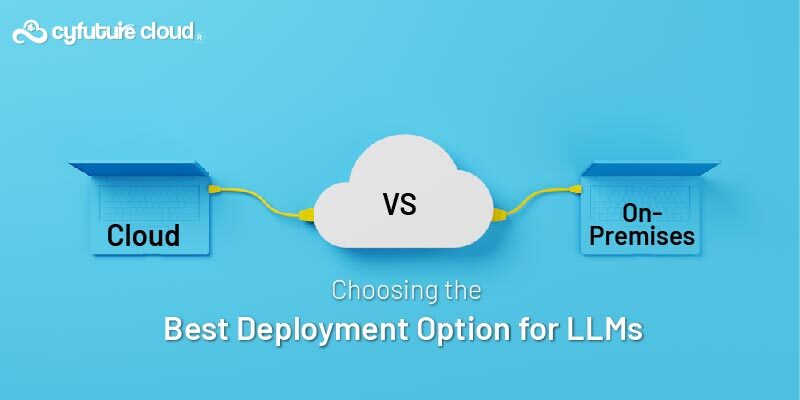Table of Contents
The future of CDN and its integration with other technologies, such as 5G and IoT
Every day, there is a rise in devices connected to 5G and the Internet of Things (IoT). 5G technology is crucial in meeting the demand for better quality and faster networks in CDN. It provides high-quality cellular networking solutions.
Read on to discover how CDN integrates with 5g and IoT integration and what CDN’s future is.
What is a CDN (Content Delivery Network)?
A CDN is a system of geographically dispersed servers optimized to quickly deliver web content. This is achieved by caching a copy of the content on servers near the user’s location.
CDN decreases the distance that the data has to travel, which in turn enhances the speed at which the content is delivered. It is commonly used for transferring images, videos, HTML pages, javascript files, stylesheets, and other large files, but it can also be used to deliver any web content.
CDN services are growing continuously, and currently, the maximum web traffic is served through CDNs, including web traffic from popular sites like Netflix, an OTT platform, Facebook, a social media platform, and Amazon.
A CDN cloud computing, configured correctly, can guard websites against malicious attacks such as DDoS.
Benefits of CDN Cloud Computing
Based on the size and needs of the business, the benefits of CDNs can be divided into different components, which include:
Enhance the load times of the website page
Visitors usually abandon a website if it takes too long to load a webpage content. Content Delivery Network (CDN) services can help improve load times in several ways. That includes;
- CDNs allow for faster service by globally distributing data centers, allowing users to connect to a nearby one instead of the origin server, reducing distance between user and resources.
- CDNs enhance transfer speed through hardware/software optimizations such as efficient load balancing and use of solid-state drives.
- Thirdly, CDNs minimize data transfer by compressing and minifying files, which results in faster load times.
- Lastly, CDNs optimize TLS/SSL certificates and enable TLS false start to speed up sites that use such credentials.
Minimizing bandwidth costs
Bandwidth consumption is a significant expense for businesses. A CDN reduces hosting costs for website owners by using caching and optimizations to decrease the data needed from the origin server, thus using less bandwidth when responding to requests.
Elevating the availability and redundancy of content
One of the crucial things for any internet-based property is uptime. Large amounts of web traffic and malicious attacks cause hardware failures that interrupt normal website function and lead to downtime.
A comprehensive Content Delivery Network (CDN) has features that minimize downtime, such as load balancing to evenly distribute network traffic, intelligent failover to redirect traffic to operational servers in case of hardware malfunction, and Anycast routing to redirect traffic to an available data center if an entire data center experiences technical issues, ensuring continued access to the website for users.
CDN’s distributed nature allows it to handle more web traffic and be more resilient to hardware failures compared to many origin servers. Moreover, if, due to some reason, one or more of the CDN servers go offline, other operational servers can choose the web traffic and keep the service uninterrupted.
Improving website security
When a single web server handles all data transfers, it increases the risk of exposure to malicious events such as Distributed Denial of Service (DDoS) attacks and other vulnerabilities.
DDoS attacks involve coordinated requests for information from multiple locations and users at a specific time, often deployed through bots, to overwhelm the origin server and make the website inaccessible. To protect against these attacks, it is recommended to use DDoS filters and distribute web traffic across multiple locations.
In addition, implementing a CDN can also help protect against hackers and secure sensitive data through data authentication and encryption. This is achieved by deflecting web traffic from the primary server to proxies, making it more difficult for hackers to target the source.
Additionally, using SSL/TLS certificates, which can be purchased or obtained for free from trusted certificate authorities, can further secure information transfers by ensuring that only the intended recipient can access and view the information. Free SSL/TLS certificates are often included in web hosting plans offered by providers.
5g and IoT integration
- Faster delivery:
5g and IoT integration would allow for more immediate delivery of content and services, as 5G networks offer higher bandwidth and lower latency than previous generations of cellular networks.
- Edge computing: CDNs and 5G networks could work together to enable edge computing, allowing for the processing and storage of data closer to the end-user, resulting in faster and more efficient delivery.
- IoT support: CDNs integrated with 5G and IoT would allow for the efficient delivery of data from IoT devices and support the growing number of connected devices.
- Real-time streaming: Integrating CDNs with 5G networks would enable real-time streaming of high-definition video and audio content, improving the user experience.
- Better security: Integrating CDNs with 5G networks would also enhance safety by providing better protection against DDoS attacks and other cyber threats.
- Scalability: CDNs integrated with 5G and IoT would enable the scalability of data and services as the number of connected devices increases, providing an efficient way to handle the growing amount of data.
The future of CDN
According to Technavio, the forecast period for the content delivery network (CDN) market is 2022-2026, with 2021 as the base year. The market is predicted to see substantial expansion, growing by USD 51.23 billion. The compound annual growth rate (CAGR), which gauges the market’s growth rate, is expected to reach 26.84% in the forecast period.
The future of Content Delivery Networks (CDNs) will likely involve a greater focus on personalization and customization and continued expansion and innovation in areas such as edge computing and security.
As more companies and individuals rely on online content and services, there will be an increasing demand for faster and more reliable delivery of that content. This could lead to the development of new technologies and strategies for delivering content, such as using artificial intelligence and machine learning to optimize the delivery process.
CDNs are also expected to play an increasingly important role in protecting against cyber threats, such as DDoS attacks and malware. Overall, the future of CDNs is likely to be characterized by ongoing innovation and evolution as these networks adapt to meet the changing needs of the online landscape.
In conclusion,
The future of CDN cloud computing looks set to be shaped by integrating new technologies such as 5g and IoT integration. These technologies will bring new challenges and opportunities for CDNs and require them to adapt and evolve to meet the demands of the modern internet. Adopting new technologies and utilizing their abilities, CDNs will enhance the performance and accessibility of global content for users.
Send this to a friend

 Server Colocation
Server Colocation CDN Network
CDN Network Linux Cloud Hosting
Linux Cloud Hosting Kubernetes
Kubernetes Pricing Calculator
Pricing Calculator
 Power
Power
 Utilities
Utilities VMware Private Cloud
VMware Private Cloud VMware on AWS
VMware on AWS VMware on Azure
VMware on Azure Service Level Agreement
Service Level Agreement 



















